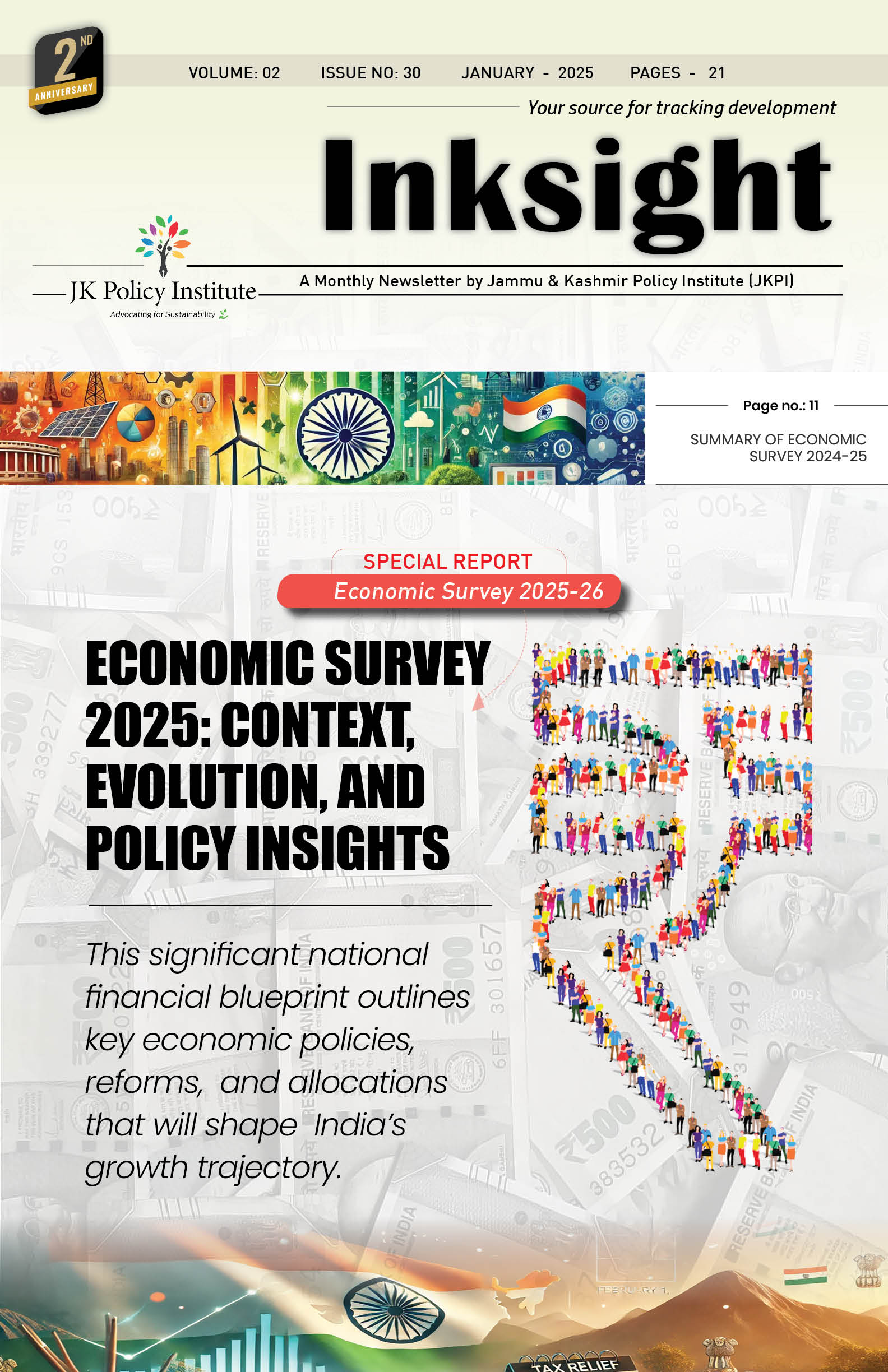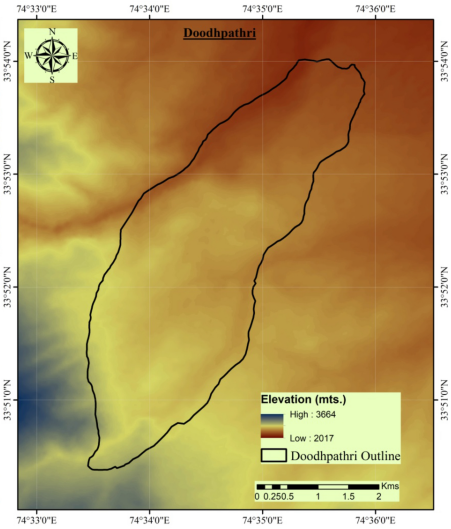Introduction:
Around 2013, Doodhpathri, a bowl-shaped valley in the Pir Panjal Range of the Himalayas, located in the Budgam district, was introduced to the tourism map. Over the years, this alpine valley, with its pine, fir, and deodar forests, lush meadows, snow-covered mountains, and wildflowers such as daisies, forget-me-nots, and buttercups, has captured the attention of tourists. The local management aims to attract even more visitors.
Well, Instagram has made it easier—it all starts with a simple hashtag or a viral reel. A scenic location is identified, influencers capture a breathtaking shot, and that’s it. A hidden treasure quickly transforms into a must-visit destination, thanks to the power of social media. But when the tide of visitors swells into a tsunami, over-tourism takes hold.
Now, this ecologically sensitive area is struggling with an influx of tourists. Beneath the picturesque selfies and the thrill of discovering Doodhpathri, a quiet calamity is unfolding.
Overtourism:
Overtourism is a global phenomenon that disrupts the delicate balance between tourism expansion and the long-term preservation of a location’s natural, cultural, and socioeconomic resources. While tourism plays a crucial role in fostering social development, cultural exchange, and economic growth, it also poses a risk of depleting these very resources—especially in fragile locations like Doodhpathri.
In recent years, the concept of overtourism has gained significant attention in the tourism industry, media, and academic research. Overtourism occurs when visitor demand exceeds a destination’s capacity, leading to congestion, environmental degradation, and a negative impact on the surrounding area.
The concept of overtourism emerged from the harmful effects of unchecked tourism expansion, including societal instability and ecological damage. While tourism offers significant economic benefits, an excessive influx of visitors in popular destinations often leads to irreversible environmental degradation—a phenomenon known as “tourism kills tourism.”
Despite growing research on the issue, practical challenges persist, particularly in regions like the Kashmir Valley, where managing overtourism remains difficult due to unique sociopolitical and environmental factors.
Overtourism in Doodhpathri:
Doodhpathri, a popular tourist destination in the Kashmir Valley, is renowned for its tranquillity and natural beauty. While tourism authorities celebrate this surge as a major achievement, environmentalists are deeply concerned that the numbers exceed the area’s carrying capacity. They argue that excessive tourist traffic is damaging the region’s delicate ecosystem. Critics contend that Doodhpathri’s ecological sensitivity is being overlooked in favor of promoting it as a mass tourism destination. As one critic puts it, “This is not development; this is degradation.” They urge the government to implement eco-friendly tourism policies that balance tourist needs with environmental preservation.
Experts urge the government to adopt eco-friendly tourism strategies that balance visitor needs with environmental preservation.
In 2013, approximately 125,000 tourists visited Doodhpathri. Over the past decade, the number of visitors has increased significantly.
According to authorities, between January and October 2023, Doodhpathri received 2.628 million visitors. However, in 2024, the number saw a slight decline, with a total of 1.86 million tourists visiting the area. This included 681,255 local visitors, 1,482 international tourists, and 1,182,843 domestic travelers.
Although tourism authorities praise this surge as a significant achievement, environmentalists are deeply concerned that the numbers exceed the area’s carrying capacity. They argue that the region’s fragile ecosystem is being harmed by excessive visitor traffic.
Carrying Capacity and Doodhpathri:
The World Tourism Organization defines tourism carrying capacity as “the maximum number of people that may visit a tourist destination at the same time, without destroying the physical, economic, and sociocultural environment and causing an unacceptable decrease in the quality of visitors’ satisfaction.”
To assess the tourism carrying capacity of Doodhpathri, a study titled “Carrying Capacity—A Brief Case Study of Doodhpathri Tourist Spot in Jammu & Kashmir’s Budgam District” was conducted in 2022. The study aimed to determine the maximum number of tourists the site can accommodate without negatively affecting its ecological, social, and cultural context.
Using a quantitative approach based on the Cifuentes (1992) framework, the study calculated two key measures:
First, the maximum number of people that can physically occupy a given area is known as physical carrying capacity (PCC). The analysis considers the total Doodhpathri tourist area (335 hectares) and the average tourist density (3.15 people per hectare).
Since tourists typically spend about eight hours at the site, three different groups of visitors can use the same location in a single day. The study concludes that Doodhpathri could potentially accommodate 4,437 visitors per day. However, this number does not account for practical limitations such as extreme weather, transportation challenges, accommodation shortages, and waste management issues.
The study applies certain limiting parameters to adjust the PCC for a more accurate estimate. The capacity is reduced by 24.65% due to harsh winters, which render much of the destination inaccessible for over three months.
Transportation is another major concern, with 42% of travelers reporting that it is inadequate. Accommodation is also an issue, as only 14% of tourists are satisfied with the available lodging options. Additionally, 18% of respondents cited inadequate waste management as a problem.
Taking all these factors into account, the study determines that the Effective Real Carrying Capacity (ERCC) is 1,367 visitors per day—the maximum number that can be accommodated without negatively impacting the ecosystem or the overall tourist experience.
Notably, in 2024, a total of 1.86 million people visited Doodhpathri, meaning that, on average, more than 5,000 visitors arrived daily. However, according to its carrying capacity, the site can sustainably accommodate only 1,367 tourists per day without harming its ecology. This indicates that 266% more tourists visited Doodhpathri than its carrying capacity, which could have severe repercussions.
Impacts of Unsustainable Tourism in the Area:
Due to the massive influx of tourists, Doodhpathri is under significant environmental stress. The rapid growth of tourism has surpassed its natural carrying capacity, placing considerable strain on its resources. Tourism has caused major environmental issues, such as deforestation, air pollution, water scarcity, and excessive solid waste generation. The area is more dependent on rivers and streams due to a reduced number of groundwater sources. While tourism has boosted the local economy, it has also disrupted social order and weakened the natural balance of Doodhpathri. The region’s ecological stability is at risk, and the long-term viability of the tourism sector is also threatened by environmental degradation.
Pertinently, Doodhpathri is located near the Shin Mahnew and Tatakuti Glaciers, which feed the Shaliganga and Shukhnag Rivers, both tributaries of the Jhelum River. These rivers are lifelines for Budgam and parts of Srinagar, as they provide drinking water and irrigation to the area. Allowing unchecked tourist access to the region puts these crucial glaciers at risk. Over the past decade, the water levels in these rivers have decreased at an alarming rate. The increased influx of tourism is one of the contributing factors. Research also indicates that the water quality of these rivers has deteriorated due to the surge in tourism.
Recommendations:
Tosamaidan is an eco-sensitive area, and it is paramount to keep it clean and free of waste. Heaps of plastic waste can be found in its forests. The government should designate it as a plastic-free zone, and those who violate the rules should be dealt with according to the law. Tourists should be encouraged to explore the local cuisine, which would help locals earn a livelihood. Secondly, proper waste management systems for both liquid and solid waste should be implemented. Eco-friendly housing, efficient waste management systems, and conservation education initiatives for both residents and visitors are essential for promoting sustainable tourism.
Allowing tourism in a place should align with its carrying capacity to prevent overcrowding and environmental degradation. According to available studies and data, Doodhpathri has already exceeded its carrying capacity and is severely harming its ecosystems and natural resources. Overuse is leading to pollution, habitat loss, and the depletion of essential resources like water, which are vital for both local livelihoods and tourism. Controlling visitor numbers and investing in sustainable infrastructure are crucial for striking a balance between tourism and environmental preservation. This will help the administration manage tourism responsibly while benefiting the economy.
Doodhpathri is a relatively under-researched region. There is no comprehensive research that estimates the impact of unsustainable tourism on its upper glaciers, surrounding rivers, and wildlife and plant life. It is paramount to conduct proper research to understand the ecological consequences of the region’s expanding tourism. A comprehensive study would help guide sustainable tourism practices and provide a clearer picture of the environmental impacts. This information could encourage local officials to adopt ecologically friendly policies that safeguard the area’s vulnerable ecosystems. Responsible tourism would help conserve Doodhpathri’s biodiversity and natural resources for future generations.
Conclusion:
For the past half-decade, millions of tourists have visited Doodhpathri each year due to its natural abundance. The region’s economy has benefited greatly from tourism. However, greater opportunity also brings greater responsibility. The surroundings of Doodhpathri are delicate and sensitive, and natural resources are strained to meet the demands of so many tourists. In addition to long-term environmental harm, this stress frequently results in the contamination of the resources the ecosystem depends on. Therefore, extra care must be taken to manage tourist flow. The biodiversity and natural resources of these areas may be at risk if proper regulations are not in place.
References:
https://www.dailygoodmorningkashmir.com/doodpathri-fast-becoming-a-winter-tourist-destination/



Leave a Reply
You must belogged in to post a comment.